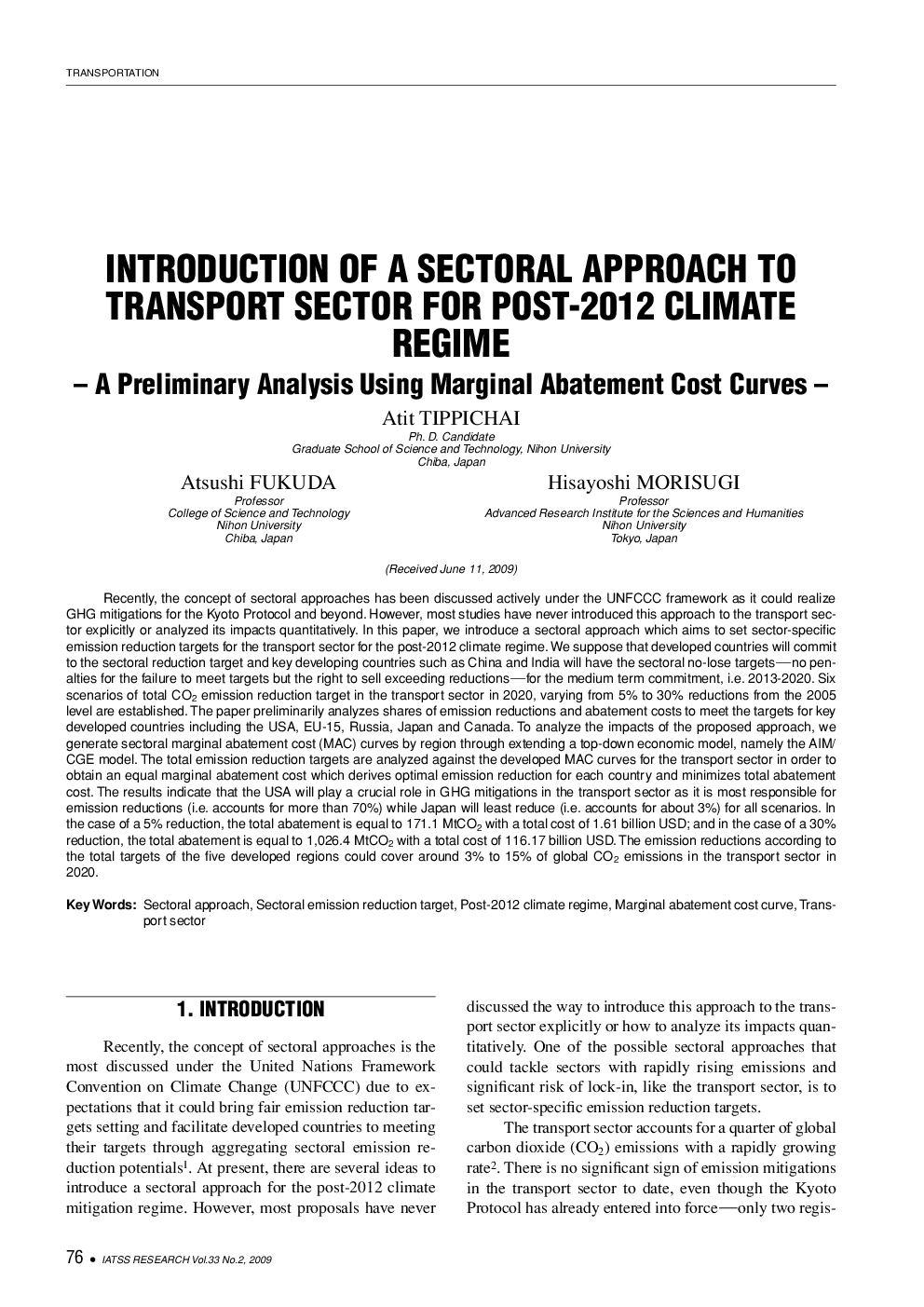| کد مقاله | کد نشریه | سال انتشار | مقاله انگلیسی | نسخه تمام متن |
|---|---|---|---|---|
| 1104793 | 954153 | 2009 | 12 صفحه PDF | دانلود رایگان |

Recently, the concept of sectoral approaches has been discussed actively under the UNFCCC framework as it could realize GHG mitigations for the Kyoto Protocol and beyond. However, most studies have never introduced this approach to the transport sector explicitly or analyzed its impacts quantitatively. In this paper, we introduce a sectoral approach which aims to set sector-specific emission reduction targets for the transport sector for the post-2012 climate regime. We suppose that developed countries will commit to the sectoral reduction target and key developing countries such as China and India will have the sectoral no-lose targets — no penalties for the failure to meet targets but the right to sell exceeding reductions — for the medium term commitment, i.e. 2013–2020. Six scenarios of total CO2 emission reduction target in the transport sector in 2020, varying from 5% to 30% reductions from the 2005 level are established. The paper preliminarily analyzes shares of emission reductions and abatement costs to meet the targets for key developed countries including the USA, EU-15, Russia, Japan and Canada. To analyze the impacts of the proposed approach, we generate sectoral marginal abatement cost (MAC) curves by region through extending a top-down economic model, namely the AIM/CGE model. The total emission reduction targets are analyzed against the developed MAC curves for the transport sector in order to obtain an equal marginal abatement cost which derives optimal emission reduction for each country and minimizes total abatement cost. The results indicate that the USA will play a crucial role in GHG mitigations in the transport sector as it is most responsible for emission reductions (i.e. accounts for more than 70%) while Japan will least reduce (i.e. accounts for about 3%) for all scenarios. In the case of a 5% reduction, the total abatement is equal to 171.1 MtCO2 with a total cost of 1.61 billion USD; and in the case of a 30% reduction, the total abatement is equal to 1,026.4 MtCO2 with a total cost of 116.17 billion USD. The emission reductions according to the total targets of the five developed regions could cover around 3% to 15% of global CO2 emissions in the transport sector in 2020.
Journal: IATSS Research - Volume 33, Issue 2, 2009, Pages 76–87